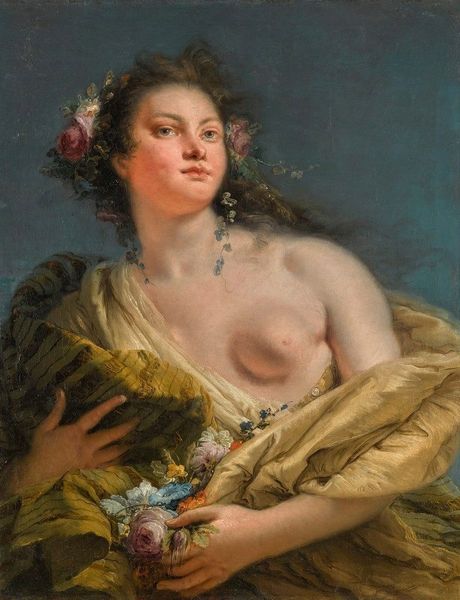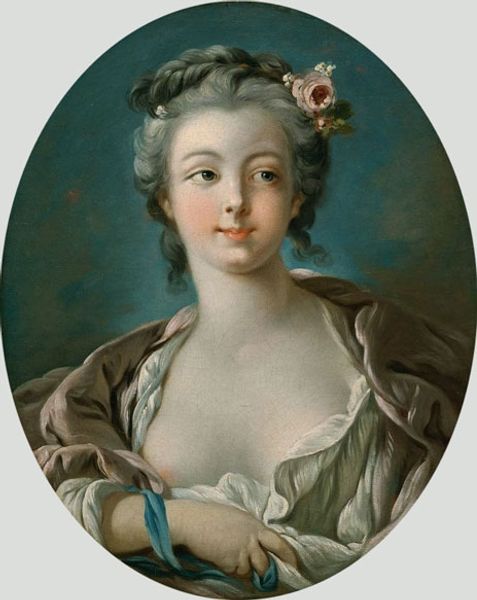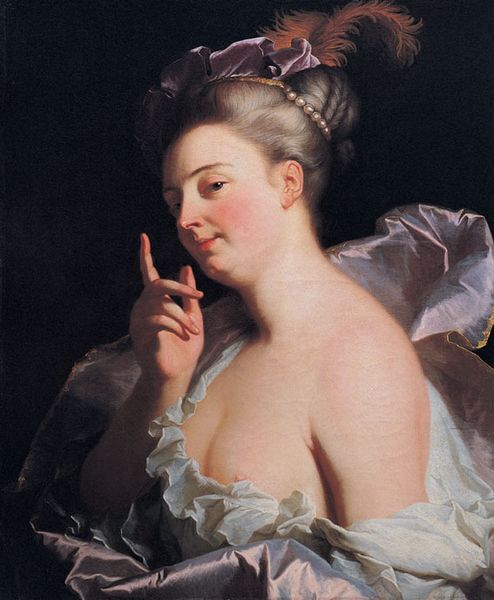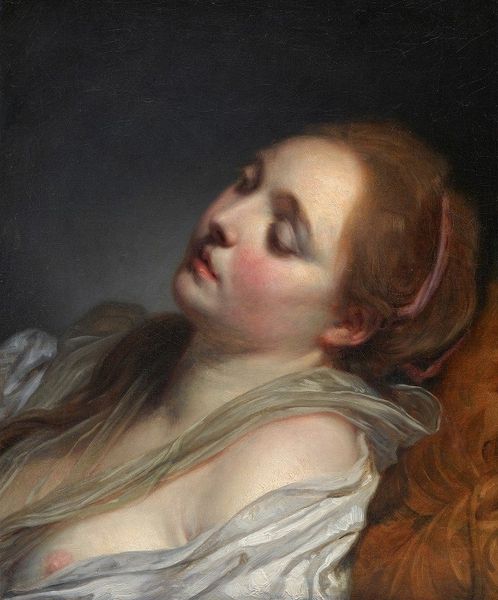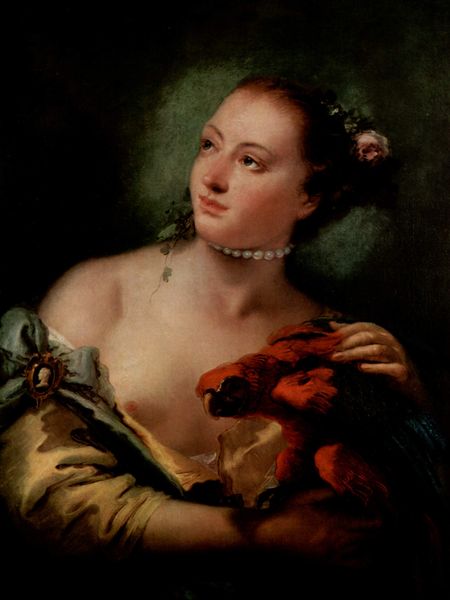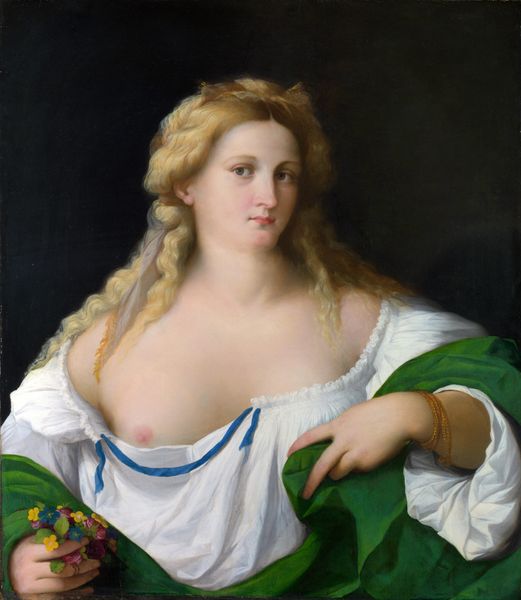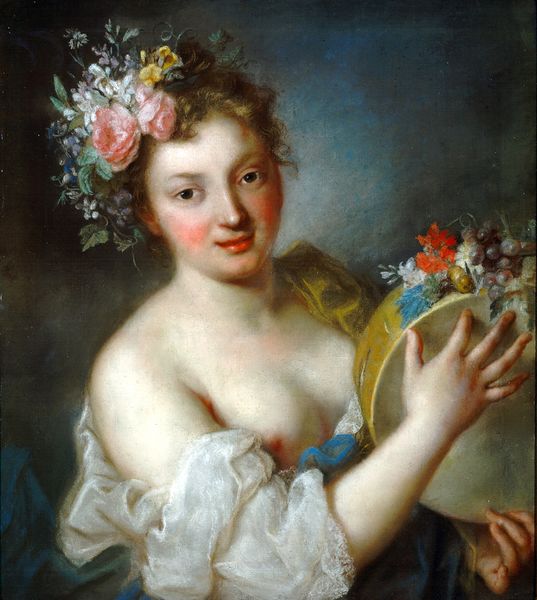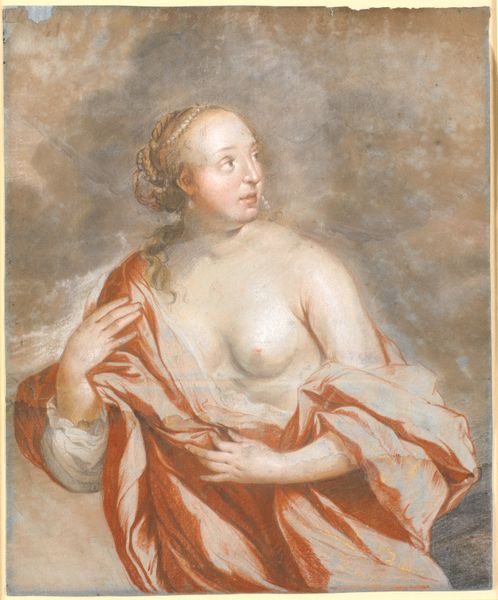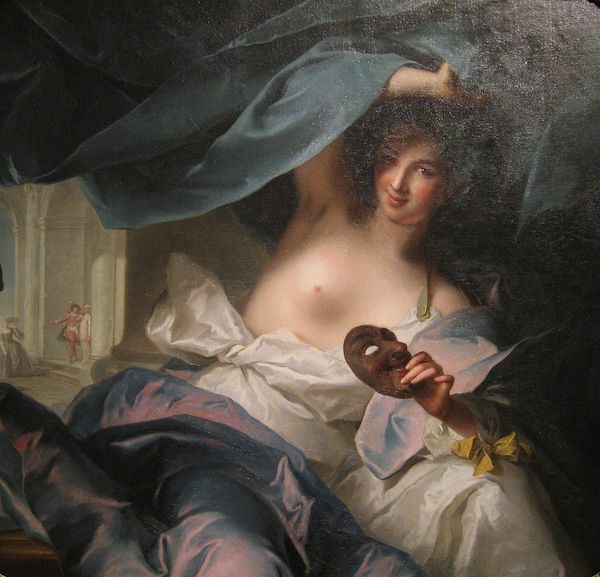
Copyright: Public Domain: Artvee
Elisabeth Louise Vigée Le Brun painted this Bacchante, a female follower of Bacchus, the Roman god of wine, intoxication, and ecstasy. The vine leaves and grapes adorning the woman's head are more than mere decoration; they are potent symbols of Dionysian revelry. The wreath of vines, seen also in ancient Roman mosaics, evokes the Bacchanalia—rites that promised liberation and union with the divine through ecstatic dance and intoxication. Consider the Maenads of Greek tragedy, figures driven to madness, their unbound hair and frenzied movements mirroring a rejection of societal constraints. The bacchante’s disheveled appearance embodies this abandonment of restraint. Interestingly, the wine that is associated with the bacchantes, when poured out as libation to the gods, is at once an offering and a communion. Just as Le Brun draws on classical imagery, the motif resurfaces across eras, each time carrying echoes of its wild, ecstatic origins.
Comments
No comments
Be the first to comment and join the conversation on the ultimate creative platform.
